Last Updated on May 22, 2025 by Packoi Team
Terms like compostable, biodegradable, and recyclable are often used interchangeably, yet they operate on fundamentally different principles. Misunderstanding them can lead to well-intentioned but ineffective choices. These choices ultimately miss the mark on true sustainability.
Our article cuts through the noise. We’ll explore what these terms really mean, the science behind them, and how each one fits into the broader mission of building a circular economy. Whether you’re a brand decision-maker, a curious consumer, or a sustainability advocate, you’ll leave with clarity.
Understanding the Core Definitions
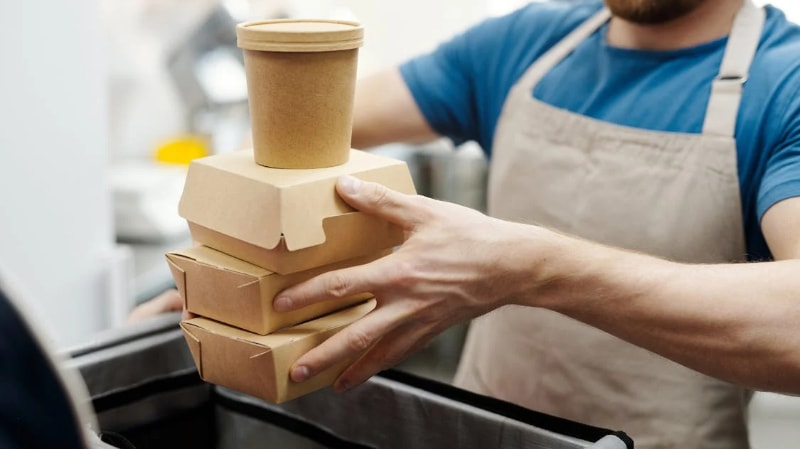
Let’s take a look at the definitions of these terms. We also cover their merits and demerits briefly.
What Is Compostable Packaging?
Compostable packaging is designed to do more than just disappear. It’s meant to return to the earth as a nutrient, not a pollutant. Unlike traditional materials that linger in landfills or oceans, compostable packaging breaks down into water, carbon dioxide, and organic matter when placed in a composting environment.
But there’s a catch: most compostable materials require the controlled conditions of industrial composting facilities. These environments maintain consistent heat, moisture, and microbial activity to speed up the decomposition process.
Unless the packaging is certified home compostable, tossing it into your backyard bin likely won’t do the trick.

Compostable packaging typically breaks down within weeks to a few months. Their breakdown is significantly faster than plastics or even biodegradable alternatives.
But “compostable” isn’t just a feel-good label. For packaging to truly qualify, it must meet rigorous standards such as ASTM D6400 (in the U.S.) or EN 13432 (in Europe). These certifications ensure that the material not only decomposes but also leaves no toxic residue behind.
What Is Biodegradable Packaging?
Biodegradable materials break down with the help of microorganisms such as bacteria and fungi. That sounds similar to compostable packaging, but there’s a crucial difference: no specific timeframe or end result is guaranteed.

Some biodegradable materials might decompose in a matter of months, while others could take decades, especially if buried in a landfill without oxygen or sunlight.
Many people assume that anything labeled “biodegradable” is good for the environment, but that’s not always true. In many countries, “biodegradable” isn’t a legally defined or regulated term. Companies can use it on packaging even if the materials don’t fully break down in a safe or eco-friendly way.
However, there are genuinely biodegradable packaging options that are much better for the planet. These are usually made from natural, renewable sources like cornstarch, mushroom roots, or certain agricultural fibers.
When properly designed and sourced, these materials can break down cleanly, leaving little to no harmful residue.
What Is Recyclable Packaging?

Recyclable packaging plays a different role in the sustainability conversation. Instead of breaking down, it’s built to loop back into the system. When properly collected and processed, recyclable materials can be transformed into new products again and again.
Cardboard, aluminum, glass, and certain plastics are all commonly recyclable. But the system hinges on one critical factor: infrastructure. If the local recycling facility doesn’t accept a particular type of plastic, it doesn’t matter how recyclable it is in theory. It’s a waste in practice.
Design also matters. A recyclable package covered in non-recyclable coatings, inks, or adhesives can become unrecyclable altogether. That’s why packaging engineers are increasingly embracing design-for-recycling principles.
Recyclable materials help reduce the demand for virgin resources, lowering the carbon footprint of future production cycles. Still, they’re not without limitations. Recycling consumes energy, and not all materials can be recycled indefinitely (plastic degrades in quality over time, for instance).
Compostable vs Biodegradable vs Recycling Packaging
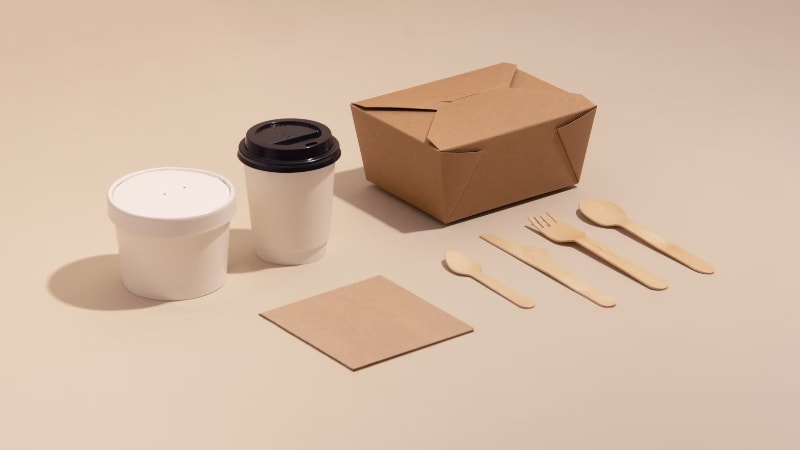
Let’s take a look at how these packaging options differ from each other.
Compostable vs Biodegradable Packaging
Both compostable and biodegradable packaging aim to reduce waste by breaking down into natural elements. However, they differ significantly in how they decompose, how quickly this happens, and under what conditions.
- Decomposition Conditions: Compostable materials require specific conditions to break down effectively. These include adequate heat, moisture, oxygen, and the presence of particular microbes. Biodegradable materials can decompose in a wider range of environments.
- Process Control: Composting is a managed, controlled process designed to ensure complete and safe decomposition. Biodegradation is less predictable and occurs naturally without human management.
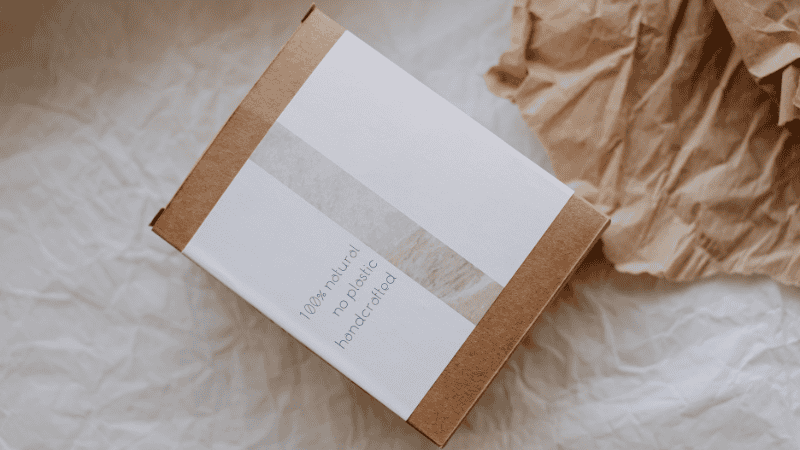
- Environmental Standards: Compostable packaging must meet strict, recognized standards such as ASTM D6400 (in the U.S.) or EN 13432 (in Europe). These certifications guarantee that the packaging will break down safely and within a specific time frame. Biodegradable packaging often lacks such certifications.
- Residue and Safety: Compostable packaging breaks down into harmless substances like water, carbon dioxide, and organic matter that enriches soil. Biodegradable packaging may sometimes leave behind microplastics or harmful residues.
Due to these differences, the usage of both types of packaging materials varies.
Biodegradable vs Recyclable Packaging
Biodegradable packaging breaks down with the help of nature. Recyclable packaging is reprocessed into new items. Here’s how they differ:
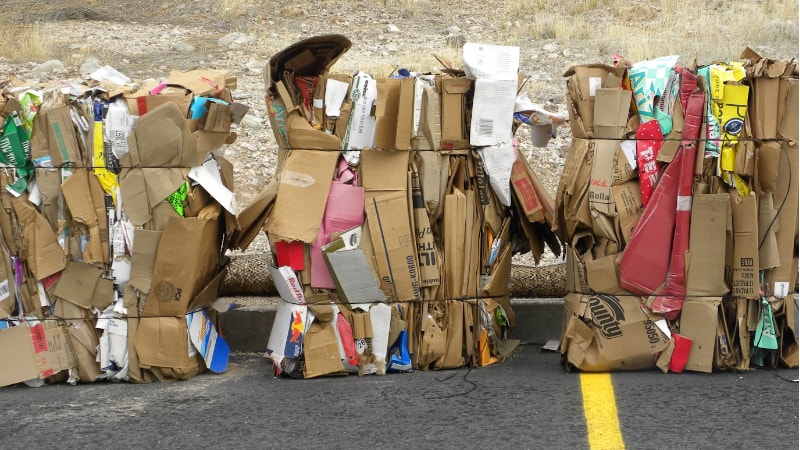
- Material Lifecycle: Recyclable packaging stays in the material loop through multiple reuse cycles, supporting a circular economy. Biodegradable packaging exits the loop by breaking down.
- Verification and Certification: Biodegradable claims are often not verified and can be misleading without proper certification. Recyclable packaging is easier to regulate and verify.
- Environmental Risks: Poorly designed biodegradable packaging may leave microplastics behind after breaking down. Recycling requires energy, water, and infrastructure, but reduces the need for new raw materials.
Without certification, biodegradable claims can be misleading. This is often called greenwashing. Recyclable packaging is easier to regulate and measure, which makes it more transparent for consumers.
Compostable vs Recyclable Packaging
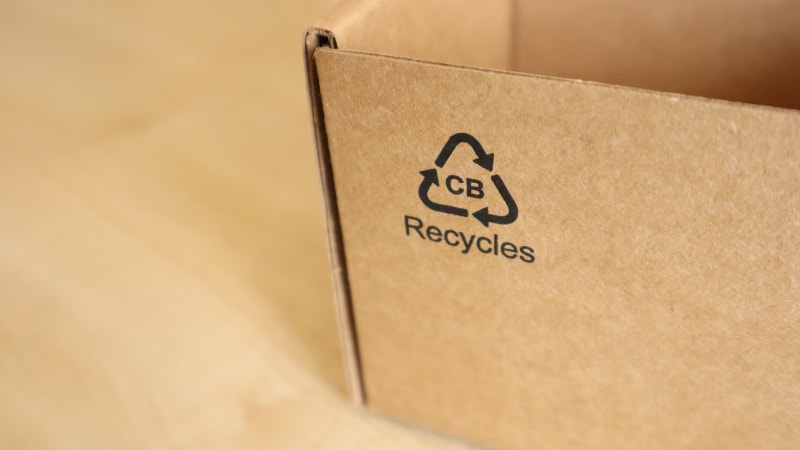
Compostable packaging is designed to return safely to the earth, as it breaks down into soil-nourishing elements. Recyclable packaging is built to stay in use. It’s collected, processed, and turned into new materials. Their differences are as follows:
- Purpose: Compostable packaging breaks down into soil-nourishing elements. Recyclable packaging is processed to be reused in new products.
- Ideal Use: Composting suits organic waste like food containers and soiled packaging that cannot be recycled. Recycling works best for clean, dry goods such as bottles, cans, and boxes.
- Processing Requirements: Compostable packaging needs specific conditions, often found in industrial composting facilities, to break down properly. Recycling depends on local infrastructure to collect and process materials.
Without access to composting, compostable packaging may end up in landfills where it decomposes poorly. Similarly, recyclable packaging requires proper sorting and facilities to be effective.
Comparison Table of Sustainable Packaging Types
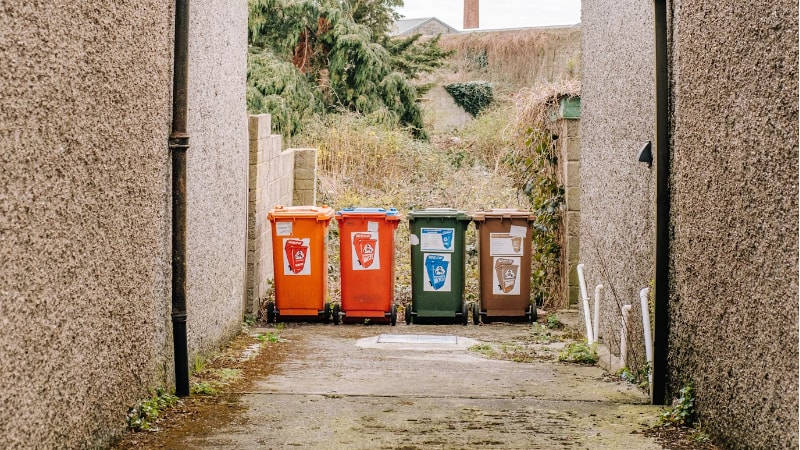
The following table shows how different sustainable packaging materials differ.
| Feature | Compostable | Biodegradable | Recyclable |
|---|---|---|---|
| Breaks down naturally | ✅ | ✅ | ❌ |
| Needs infrastructure | ✅ Industrial | ❌ | ✅ |
| Certification exists | ✅ | ❌ | ✅ |
| Returns to nature | ✅ Soil nutrients | ✅ Over time | ❌ |
| Risk of confusion | ❌ Certified | ⚠️ High | ⚠️ Depends on region |
Choosing the right sustainable packaging isn’t about picking a winner. It’s about aligning material purpose with real-world conditions.
Compostable, biodegradable, and recyclable options each offer unique benefits, but their success depends on how they’re used, disposed of, and supported by infrastructure. As innovation in packaging continues, the most impactful solutions will be those that combine environmental integrity with practical implementation.
Real-World Shifts: How Leading Brands Use Sustainable Packaging

Across industries, forward-thinking brands are transforming how they approach packaging. From food to fashion to skincare, companies are reimagining packaging materials as tools for environmental change. Let’s look at how sustainable packaging solutions are evolving in key sectors.
Food & Beverage
In the food and beverage industry, packaging is often single-use, making sustainability especially urgent. Compostable materials have become a go-to option for brands trying to close the loop on short-life products.
These packaging materials break down into organic matter. So, they are ideal for items like takeout containers, coffee cups, and produce bags.
Chipotle and Sweetgreen are examples of brands leaning into compostable materials. Chipotle uses compostable bowls made from molded fiber, while Sweetgreen’s salad containers are designed to break down in industrial compost facilities.
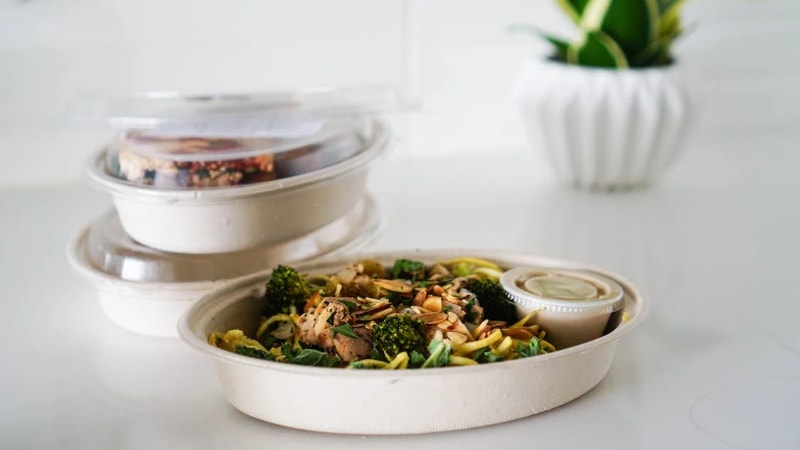
These brands align product use with disposal reality so that their packaging doesn’t outlive its contents.
Compostable packaging only works when composting systems exist nearby. Without proper composting access, even eco-friendly packaging solutions can become waste materials in landfills. That’s why education, labeling, and local collaboration are essential.
E-Commerce & Retail
The retail and e-commerce sectors face a different challenge: shipping durability. In this world, recyclable packaging often takes center stage.
Corrugated cardboard boxes, padded paper mailers, and recyclable materials like polyethylene (when accepted locally) are widely used to protect products without creating unnecessary plastic waste.

Brands like Allbirds and Pangaia are leading by example. Allbirds ships its shoes in boxes made from 90% recycled packaging. These are designed to be reused and recycled curbside. Pangaia uses mono-material mailers that can go straight into the recycling bin.
Recyclable packaging is especially effective for dry goods, clothing, books, and tech accessories. The key is simplicity. When packaging is made of one recyclable material, consumers are more likely to dispose of it correctly.
Even better, using recycled materials reduces the need for virgin materials. It helps brands cut carbon emissions while extending material life cycles.
But not all recyclable packaging is created equal. Some plastics may technically be recyclable, but rarely get processed due to low market demand or contamination. Clear labeling and design-for-recycling principles help bridge this gap.
Cosmetics & Health Products

Cosmetics and personal care brands face the dual challenge of preserving product integrity and reducing packaging waste. Traditionally dominated by plastic packaging, this industry is now experimenting with hybrids. They’re using combinations of biodegradable materials and recyclable components.
Lush is a pioneer in this space. The brand uses compostable cellulose wrap for some of its products and offers “naked” packaging. These solid shampoo bars and soaps require no packaging at all. Their black pots, made from recycled plastic, are part of a take-back scheme that closes the recycling loop.
Plaine Products uses aluminum bottles for shampoos and lotions. These are designed for return, refill, and reuse. It’s an innovative twist on sustainable packaging. While not biodegradable, the bottles are fully recyclable and eliminate single-use plastic packaging from the equation.
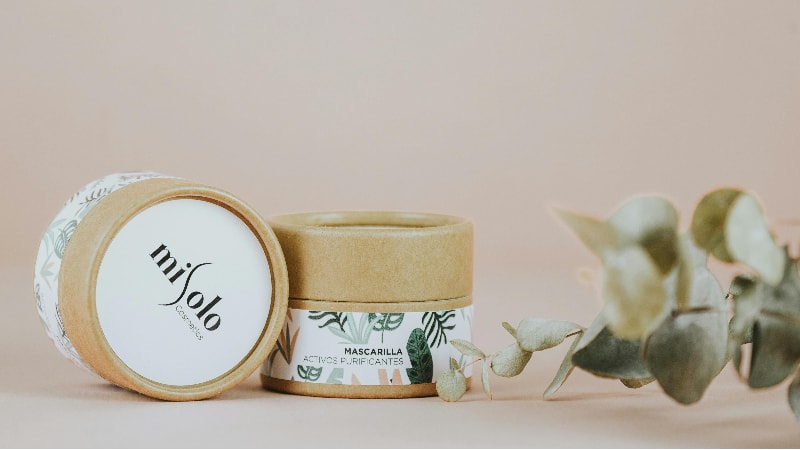
The industry is also seeing the rise of biodegradable packing peanuts made from cornstarch and sugarcane, which dissolve in water and leave no harmful residue. These alternatives are especially popular in shipping kits and beauty subscription boxes.
Biodegradable materials offer promise here. But without certification, they risk falling into greenwashing territory. That’s why more brands are working with third-party organizations to verify their claims and push for greater transparency.
How to Choose the Right Sustainable Packaging for Your Product?
Selecting the right sustainable packaging means balancing function, environmental impact, and customer habits. Here’s how to do it right.

- End-of-Life Options: Decide if your packaging will be composted, reused, or recycled based on your product and customer access.
- Product Type: Recyclable packaging suits products like electronics, clothing, or books, especially if made from common recyclable materials like cardboard or aluminum.
- Organic Products: Compostable or biodegradable packaging works better for food and organic items, but only if customers have access to proper composting facilities.
- Avoid Unnecessary Plastics: Minimize plastic use and choose reusable materials when possible to reduce waste.
- Local Infrastructure: Design packaging that aligns with your local recycling or composting systems to ensure proper disposal.
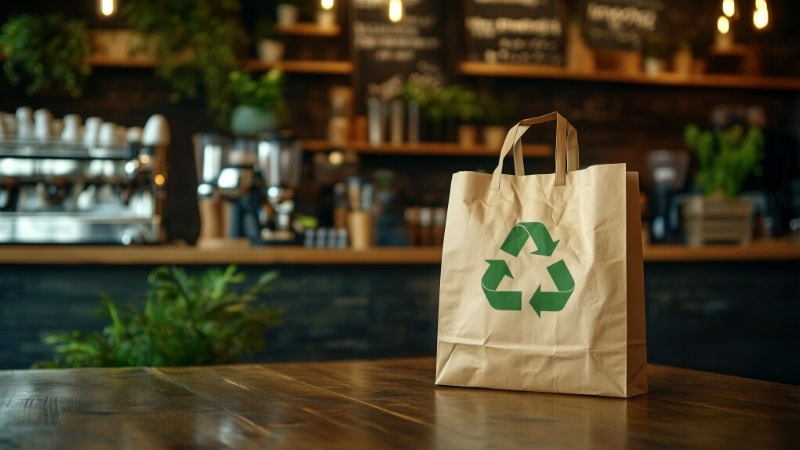
Above all, choose packaging materials that reflect your audience’s values while minimizing impact. It could be through recyclable materials or by converting waste materials into new, purposeful forms.
Finally, keep testing and evolving. Sustainable packaging isn’t static. New technologies, materials, and regulations are emerging rapidly. Stay informed about innovations in environmentally friendly packaging and compostable items.
FAQs
Can recyclable packaging go in compost bins?
No. Recyclable packaging should go in the recycling bin, not the compost bin, as it won’t break down properly. Mixing them can contaminate compost and disrupt waste processing systems.
What’s the most eco-friendly packaging type?
It depends on the product and local infrastructure, but compostable or recyclable materials made from renewable resources are often best. The most eco-friendly option minimizes waste, uses fewer virgin resources, and fits your customer’s disposal habits.
How do I know if a material is truly compostable?
Look for certifications like ASTM D6400, EN 13432, or labels that say “home compostable” or “industrially compostable.” These ensure the material breaks down safely and leaves no toxic residue.
Conclusion
There’s no one-size-fits-all answer when it comes to sustainable packaging. Each type has its strengths and limitations. What truly matters is choosing packaging materials that align with your product, your customer’s disposal options, and environmental goals. This way, you’re not just reducing waste but building a brand that stands for responsibility and innovation.
Looking to Switch to the Right Sustainable Packaging for Your Product Line?
Explore Packoi’s compostable, recyclable, and biodegradable packaging options and get expert help aligning your packaging with your brand’s sustainability goals. Reach out to discuss your needs.



